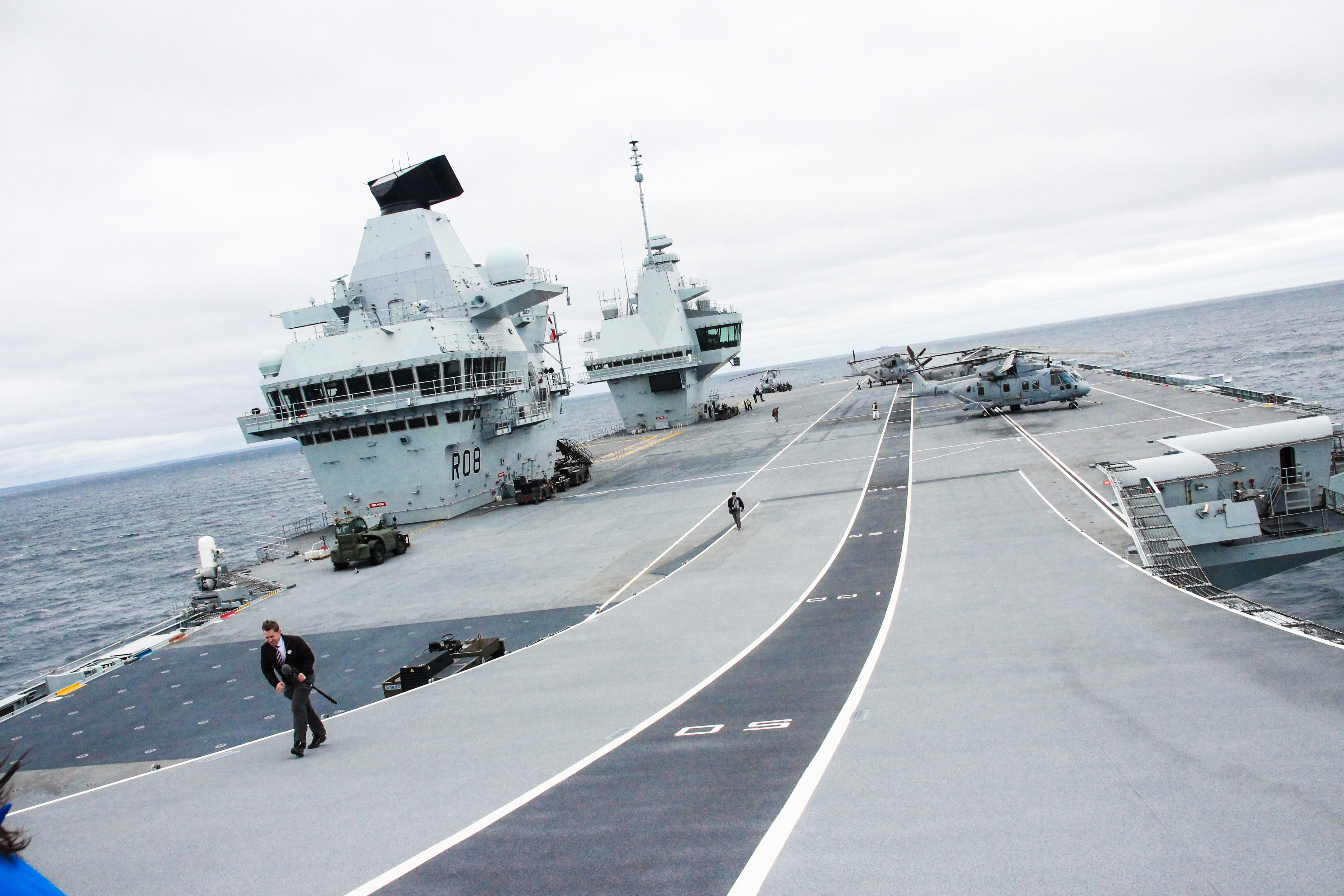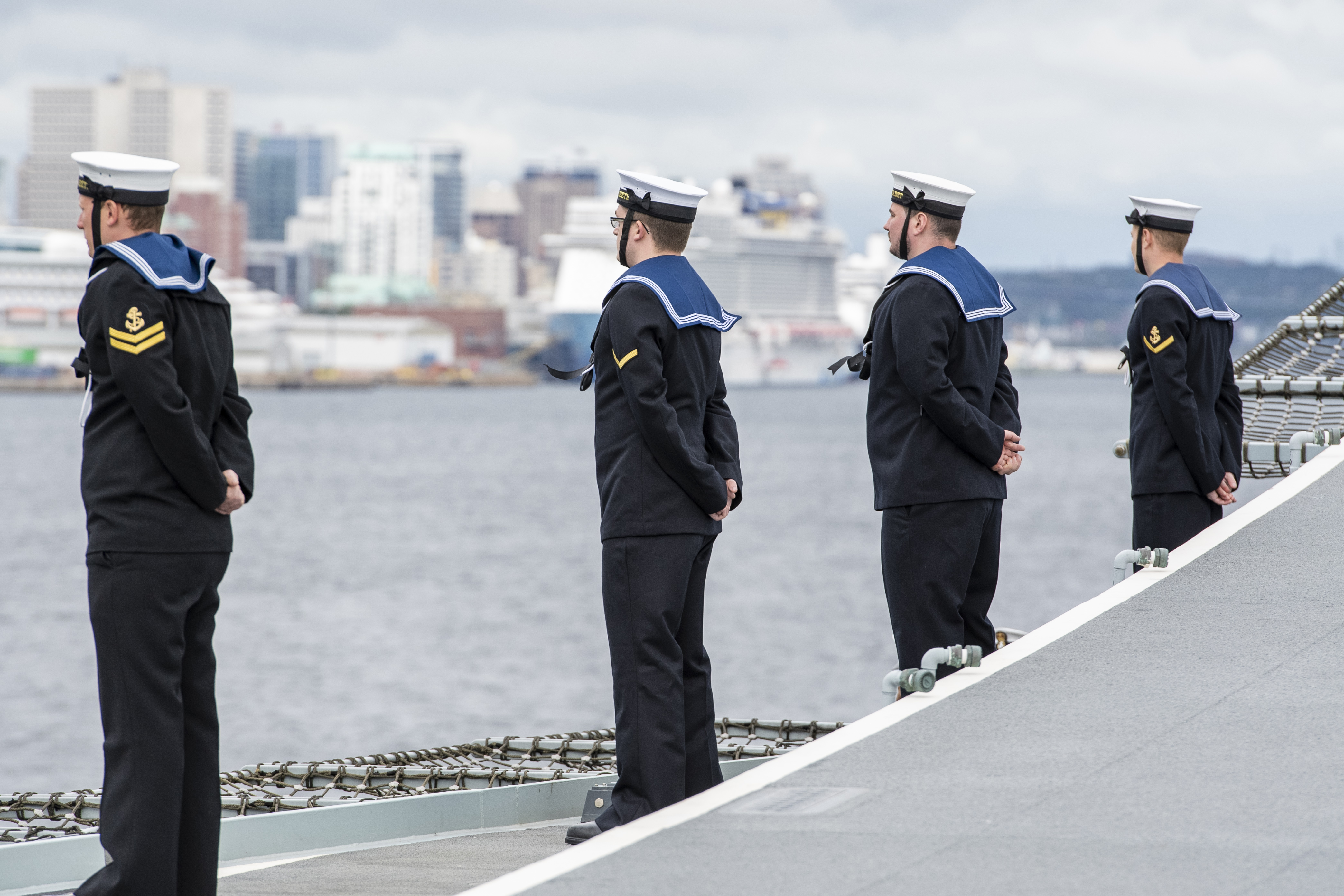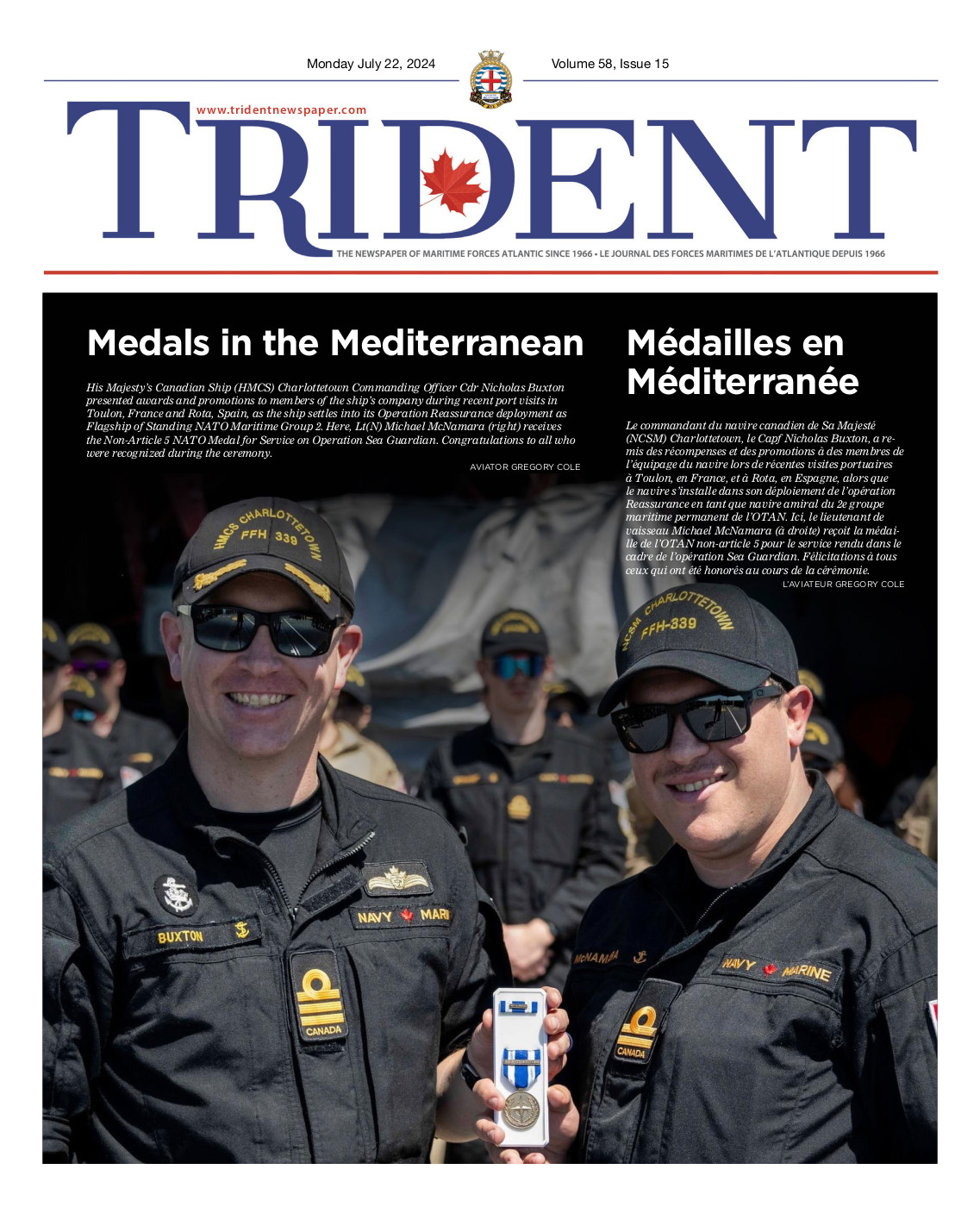
RYAN MELANSON, TRIDENT STAFF
Royal Navy brings new aircraft carrier to Halifax ahead of F-35 trials
By Ryan Melanson,
Trident Staff

MONA GHIZ, MARLANT PA
The Royal Navy’s newest and largest-ever class of aircraft carrier visited Canada for the first time from September 13-16, with HMS Queen Elizabeth dropping anchor in Halifax harbour near George’s Island.
The first of its class, Queen Elizabeth is a mammoth ship weighing 65,000 tons and with a flight deck that stretches 280 metres long. It’s capable of carrying up to 40 aircraft at once, along with more than 1,600 RN and RAF members when at full capacity. The ship was commissioned in 2017, and has been undergoing various trials with full operational capability expected in 2021.
“She’s a new class, with a new design, on a much larger scale than what we’ve operated before. The size of the flight deck gives us great flexibility to operate a much larger and greater range of aircraft,” said Cdr Ed Phillips, the Air Commander in charge of Queen Elizabeth’s Flying Control station.
The extra flight deck space also allows for one of the carrier’s notable features – two raised islands as opposed to the usual single island. This allows one to be used for ship operations and the other to focus on air operations. The second island also contains a fully functional backup bridge. It’s one of the many reasons Queen Elizabeth and her sister ship HMS Prince Wales, set to begin sea trials later this year, are the most advanced ships ever built for the RN, Cdr Phillips said.
“It gives us flexibility across the whole range of what we can do, from offensive strike action to defensive missions to humanitarian missions. It’s an exciting time for the task group.”
While the stop in Halifax was a quick one, Queen Elizabeth’s deployment was set to begin ramping up after leaving Nova Scotia – next up for the UK Carrier Task Group is trials with the F35 Lightning II jet. The UK exercise WESTLANT 19 involves the group working with both British and American F35s as the new ship works its way up to being fully operational.
Initial trials in 2018 saw American jets take off and land from Queen Elizabeth hundreds of times, while this year’s deployment will focus on integrating the operational capabilities of the UK’s own F35s with the carrier. Because the new class of carrier was built specifically to work with this aircraft, the next set of trials are crucial to ensure the design works as intended, Cdr Phillips said.
“The trials in 2018 were incredibly successful. What’s key this year is taking the next step to ensure we can be operational with the aircraft, that it can work with a strike group construct with out Type 45 destroyers and Type 23 frigates, and deliver the core missions the F-35 is designed to carry out.”





